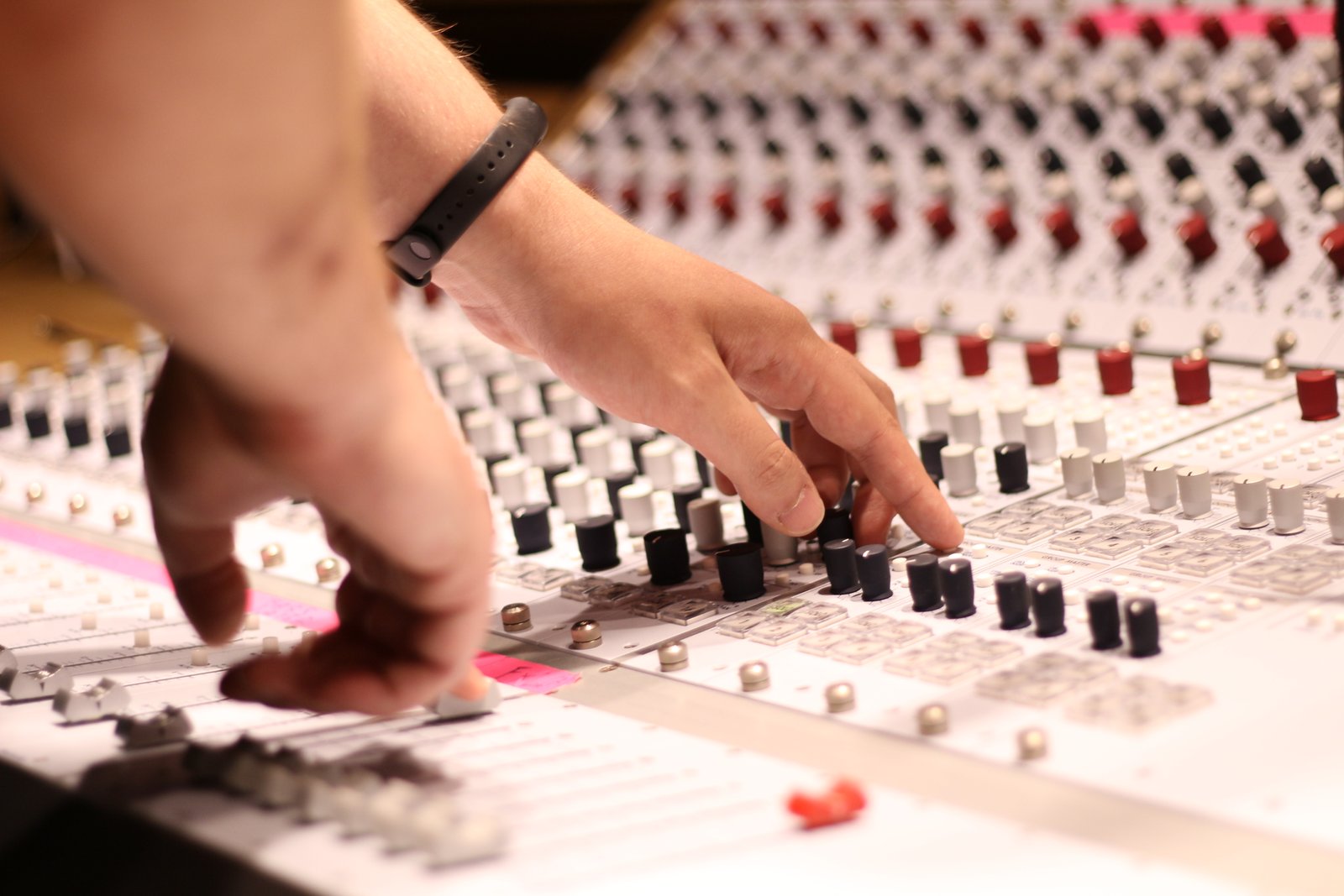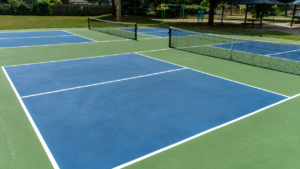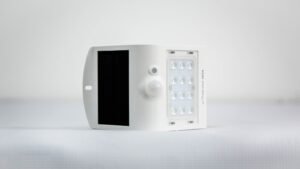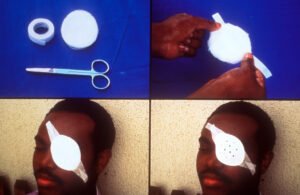If there’s one thing pickleball enthusiasts need to know like the back of their paddle, it’s the unwritten rules that govern the game. Among these, the Service Fault Rule stands tall as a game-changer that can make or break any player’s momentum on the court. Like a stealthy trickster lurking in the shadows, it has the potential to transform a well-executed serve into a dreaded fault, leaving players scratching their heads in bewilderment. In this article, we delve into the nitty-gritty details of this intriguing rule, unraveling the mystery behind what not to do in pickleball when it comes to serving. So, buckle up and get ready for a deep dive into the world of faults and finesse!
Table of Contents
- Introduction: Understanding the Service Fault Rule in Pickleball
- Avoiding Common Service Fault Mistakes: A Comprehensive Guide
- Mastering the Proper Service Technique: Key Tips and Strategies
- Overcoming Service Fault Challenges: Troubleshooting and Solutions
- Utilizing the Service Fault Rule to Excel in Pickleball
- Q&A
- The Conclusion

Introduction: Understanding the Service Fault Rule in Pickleball
Welcome to the fascinating world of pickleball! As a pickleball player, one of the most fundamental rules to grasp is the Service Fault Rule. Understanding this rule is essential for a fair and enjoyable game.
In pickleball, the service fault rule governs how the server must deliver the ball at the start of each point. A fault occurs when the server fails to comply with specific service rules, resulting in an immediate loss of the serve. It’s crucial to grasp these rules to avoid giving up valuable points during a match.
Let’s explore some key aspects of the Service Fault Rule:
- Foot Fault: This occurs when the server does not have both feet behind the baseline during the serve. To avoid foot faults, players must ensure their feet have full contact with the ground behind the baseline until after the ball has been struck.
- Out-of-Bounds Serve: If the serve lands outside the receiver’s court or in the non-volley zone (kitchen), it’s considered out-of-bounds. This results in a fault and a loss of serve.
- Failure to Serve Diagonally: The server must always serve diagonally, from their right-hand court to the opponent’s diagonal court. Serving incorrectly can lead to a fault.
- Toss Height: The ball must be struck after it reaches its highest point during the serve. Tossing the ball too high or low can result in a fault.
By understanding and adhering to the Service Fault Rule, you’ll be able to ensure a fair and competitive game of pickleball. So grab your paddle, step onto the court, and let’s dive deeper into the exciting world of this increasingly popular sport!

Avoiding Common Service Fault Mistakes: A Comprehensive Guide
In the world of service provision, errors and faults can occur, disrupting the smooth flow of operations and causing frustration for both service providers and customers. Fortunately, by being proactive and adopting a preventive mindset, many common service faults can be avoided. Here are a few key tips to help you steer clear of these pitfalls:
- Thoroughly train your staff: One of the most crucial steps in avoiding service faults is providing comprehensive training to your employees. Make sure they understand the industry standards and possess the necessary skills to deliver top-notch service.
- Regularly assess your systems and processes: Technical glitches and errors in procedures can often lead to service failures. By routinely evaluating your systems and processes, you can identify and rectify any weak links before they cause major issues.
- Keep open lines of communication: Effective communication is a cornerstone of excellent service provision. Encourage your customers to provide feedback and promptly address any concerns they may have. Additionally, foster a culture of open communication within your team to ensure everyone is on the same page.
By implementing these strategies, you can significantly reduce the occurrence of common service faults and deliver exceptional service that keeps your customers satisfied. Remember, prevention is key!

Mastering the Proper Service Technique: Key Tips and Strategies
Effective service techniques can be the key to providing exceptional customer experiences. Whether you’re in the hospitality industry, retail, or any customer-facing role, mastering the proper service technique is crucial. Here are some key tips and strategies to help you excel:
- Active listening: One of the most important skills in service is active listening. Pay attention to what your customers are saying, and aim to understand their needs and preferences. Show empathy by acknowledging their concerns and responding appropriately.
- Clear communication: Communication plays a vital role in service. Be clear and concise when conveying information to customers, avoiding jargon or technical terms they may not understand. Use a friendly and approachable tone to make customers feel comfortable and valued.
- Personalization: Tailoring your service to each individual customer can make a world of difference. Take the time to learn about their preferences and past interactions, and use that knowledge to provide personalized recommendations or solutions. This shows customers that you genuinely care about their satisfaction.
By applying these tips and strategies, you can enhance your service technique and create memorable experiences for your customers. Remember, great service builds loyalty and sets you apart from the competition. Continuously refine your skills and seek feedback to further improve your service delivery.
Overcoming Service Fault Challenges: Troubleshooting and Solutions
In the fast-paced world of technology, service faults are an unfortunate but inevitable part of the journey. However, with the right troubleshooting techniques and effective solutions, these challenges can be overcome swiftly and seamlessly. Here are some valuable strategies to help you navigate through service faults and get back on track:
- Identify the root cause: When faced with a service fault, it’s crucial to determine the underlying issue causing the disruption. Conduct a thorough analysis, review error logs, and gather relevant data to pinpoint the exact cause of the problem.
- Isolate the fault: Once the root cause is identified, it’s essential to isolate the fault to reduce its impact on the overall system. By separating affected components or services, you can minimize disruption and focus on resolving the specific issue at hand.
- Collaborate and communicate: Service faults require a collaborative approach to ensure effective troubleshooting and resolution. Engage with relevant stakeholders, such as support teams, developers, or system administrators, and maintain clear and constant communication to exchange insights, gather feedback, and streamline the troubleshooting process.
As you encounter service fault challenges, approach them with a determined mindset, armed with troubleshooting techniques and these solutions at your disposal. Remember, every fault presents an opportunity for growth and the chance to enhance the reliability and efficiency of your services.
Utilizing the Service Fault Rule to Excel in Pickleball
Pickleball, the growing sport that combines elements of tennis, badminton, and table tennis, has captured the hearts of enthusiasts everywhere. In this exciting game, the service fault rule plays a crucial role in gaining an edge over your opponents. By understanding and effectively capitalizing on this rule, you can take your pickleball skills to the next level.
Mastering the art of serving in pickleball involves precise execution and tactical awareness. The service fault rule states that the server must hit the ball below waist level and within the boundaries of the service court. To enhance your serving technique, consider these tips:
1. Focus on your form: Maintain a balanced stance, with your weight evenly distributed, and a relaxed grip on your paddle.
2. Aim for consistency: Develop a reliable serve by practicing a consistent toss and swing motion. This will allow you to control the speed and placement of the ball more effectively.
3. Exploit your opponent’s weaknesses: Pay close attention to your opponent’s positioning and movement patterns. By strategically placing your serve, you can exploit their vulnerabilities and force them into making errors.
4. Add variety to your serves: Utilize different types of serves, such as a flat serve, topspin, or slice, to keep your opponent guessing and off balance. This unpredictability will give you the upper hand.
Incorporating these strategies into your pickleball game will enable you to maximize the utilization of the service fault rule. Remember, honing your skills in serving is a continuous process that requires practice and adaptation. With dedication and perseverance, you’ll soon find yourself excelling in this dynamic sport. So, step onto the court, embrace the challenge, and serve your way to victory!
Q&A
Why is the service fault rule important in pickleball?
The service fault rule is crucial in pickleball because it ensures fair play and maintains the integrity of the game. By following the service fault rule, players have an equal opportunity to start the game without gaining an unfair advantage.
What happens if a player commits a service fault?
If a player commits a service fault, they lose their chance to serve and their opponent earns a point. It is important for players to understand and avoid service faults to stay in control of the game.
What are some common service faults to watch out for?
Common service faults in pickleball include stepping on or over the baseline during the serve, hitting the ball into the net on the serve, and failing to perform an underhand serve. It is essential for players to be aware of these faults and correct them to avoid penalties.
Can you bounce the ball before serving in pickleball?
No, a bounce is not allowed before serving in pickleball. The serve must be executed by hitting the ball directly from the hand without any bounce. Bouncing the ball before serving would be considered a service fault.
Can you fake a serve in pickleball?
No, faking a serve is not allowed in pickleball. Once a player is in the proper serving position, they must make a continuous forward motion to strike the ball. Any deceptive actions or faking the serve could result in a service fault.
Is it acceptable to step on or cross the service area during the serve?
No, players are not allowed to step on or cross the service area during the serve. Stepping on or crossing the service area would be considered a fault and can result in loss of serve. Players must ensure they stay behind the baseline while serving.
What happens if both players commit service faults?
If both players commit service faults, the server gets a second chance. However, if both players commit faults on the second serve as well, the server loses the point. It is important for players to remain cautious during their serves.
Are there any exceptions to the service fault rule?
Yes, there are a few exceptions to the service fault rule in pickleball. For example, if the server accidentally drops the ball before serving, it is not considered a fault. However, the server must quickly retrieve the ball and continue with the serve to avoid any unnecessary delays.
The Conclusion
As the final pickleball serve echoes through the courts, it’s time for us to bid adieu and recap the valuable lessons we’ve learned about the dreaded Service Fault Rule. From the comical mishaps to the mind-boggling blunders, this article has shed light on what not to do in the thrilling game of pickleball.
With a touch of creativity and a neutral tone, we embarked on a journey through the land of service errors, cautioning players to avoid the pitfalls that lead to losing points. We unraveled the mysteries behind errant footwork, lofty paddle tosses, and the elusive “kitchen” line, transforming beginners into savvy strategists and seasoned players into masters of their craft.
Through the extensive exploration of the Service Fault Rule, we presented a canvas for understanding the nuances that define this enthralling sport. With a dash of humor and a pinch of insight, we delved into the world of game-altering double faults, phantom foot faults, and service line fouls, allowing players to navigate this treacherous terrain with confidence.
But as our journey nears its conclusion, remember that the Service Fault Rule serves a vital purpose: to maintain fairness and uphold the spirit of the game. So, whether you’re a novice finding your feet or a seasoned pro refining your skills, let this knowledge guide you towards serving success and pickleball supremacy.
As we close the chapter on the Service Fault Rule, let this article be a reminder to cherish the exhilaration pickleball brings. May every game be infused with camaraderie, endurance, and an unwavering commitment to improving one’s technique. So go forth, dear readers, armed with this newfound wisdom, and let the service fau-… err, the service game begin!
As an affiliate, my content may feature links to products I personally use and recommend. By taking action, like subscribing or making a purchase, you’ll be supporting my work and fueling my taco cravings at the same time. Win-win, right?
Want to read more? Check out our Affiliate Disclosure page.




